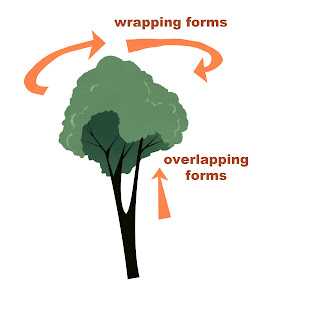Example from: "Nelly's Folly" (1961) Courtesy of Animation Sensations Art Gallery
Instead of having one clear element guiding the eye through a pan, Maurice would often create a line of flow by creating relationships between a number of smaller compositional elements.
Example from "Drafty Isn't It?"
Then Maurice would support this line of flow with other smaller elements that were roughly parallel to the main line of flow.
Supplement to Pg. 159 of "The Noble Approach."


















